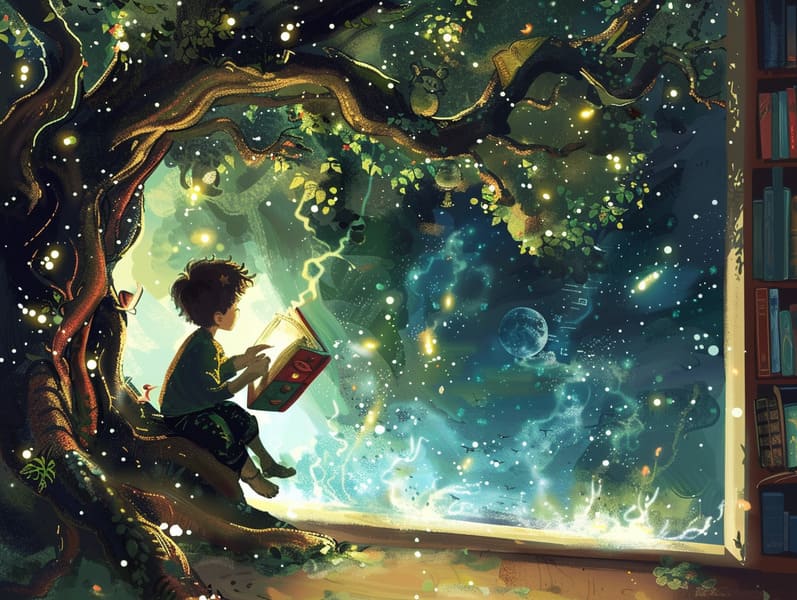
Popular fairy tales have ancient roots. These narratives have been told from one generation to the next ages before they were ever documented. They emerged from a variety of traditions, including American traditions. They were initially narrated among older generations, often carrying themes and messages mirroring the societal norms and beliefs of the time.
The Brothers Grimm, Jacob and Wilhelm Grimm, were among the first to assemble many of these beloved tales. Their collection, "Grimm's Fables," included narratives like "Ashenputtel," "Hansel and Grethel," and "Schneewittchen," which have since become pillars in the world of beloved fairy tales. Similarly, the Danish author's magical stories, such as "The Story of the Little Mermaid," and "The Duckling that Could," have stolen hearts worldwide, securing their place in the pantheon of famous fairy tales.
Despite being ancient, classic fairy tales remain as relevant as ever, especially as nighttime stories for kids. These charming stories are now available in various formats, including vibrantly illustrated books, captivating animations, and online fairy tales.
Their enduring popularity can be ascribed to several enchanting factors:
Ethical Lessons: Traditional fairy tales often whisper important moral lessons. Narratives like "The Boy Who Cried Wolf" teach the benefit of integrity, while "The Hare and the Tortoise" stress the benefits of persistence and humility. These narratives offer young ones clear distinctions between truth and falsehood, developing their moral compass in a mild yet significant way.
Kindness and Comprehension: Fairy tales frequently showcase protagonists facing tests and troubles, inspiring children to empathize with their struggles and root for their triumphs. For instance, "The Story of Beauty and the Beast" highlights the significance of looking beyond appearances to know the real character of a character, promoting tenderness and understanding.
Cultural Perception: Many ancient fairy tales are interwoven with the cultural contexts from which they originated. Delving into these fairy tales can provide informative snapshots into different beliefs, fostering a sense of world understanding and knowledge.
Inventiveness and Fantasy: The imaginative elements in classic fairy tales—supernatural elements—trigger children’s imaginations. These tales lead readers to enchanted realms, enlivening fantastical thinking and a sense of curiosity that persists a lifetime.
Traditional fairy tales are not only bewitching but also illuminating. They function as mesmerizing tools in enhancing various brain and heart skills in young ones. When traditional fairy tales are voiced, they develop linguistic abilities by introducing new lexicon and elaborate sentence structures. This practice also boosts listening abilities and attentiveness, as young readers stay focused, prepared to see what happens next.
Furthermore, conversing about the themes and characters of classic fairy tales can improve reasoning skills and evaluative skills. Little ones learn to see patterns, make predictions, and figure out cause and effect. These explorations also boost young readers utter their thoughts and feelings, advancing their emotional intelligence.
In today’s information age, the existence of internet fairy tales has made these fairy tales more acquirable than ever. Online platforms and online apps share huge assortments of Grimm's fairy tales that can be read or listened to anytime, anywhere. Fairy tales spoken are particularly prevalent, extending an captivating way for young readers to delight in these charming stories. Spoken stories and read-out-loud videos take characters and settings to life, often supplemented by enchanting melodies and instrumentals that improve the tale experience.
The timeless appeal of old fairy tales lies in their ability to adapt to current eras while keeping hold of their essential themes. Contemporary updates of these fairy tales often feature more different figures and modern settings, making them relevant to today’s audience. However, the main ideas of fortitude, kindness, and impartiality remain unchanged, continuing to reach audiences of all ages.
Fairy tales also offer a sense of serenity and predictability. They provide a organized narrative with a straightforward beginning, middle, and end, often finishing with the closure of conflicts and the triumph of righteousness over wickedness. This certainty can be calming for young readers, gifting a sense of steadiness in an shifting world.
Old fairy tales continue to captivate and teach new generations, maintaining their enchantment and pertinence in modern society. As kids' bedtime tales, they provide a perfect blend of fantasy and learning, cultivating read more moral values, empathy, and creativity. The presence of digital storybooks and the sought after status of fairy tales narrated confirm that these old fairy tales remain obtainable to new generations.
By upholding and divulging these tales, we continue to praise the rich tapestry of fables and cultural heritage. Whether you are experiencing a richly illustrated book, delving into a web-based collection, or playing an spoken story, the elegance of classic fairy tales is always within reach. These tales remind us of the everlasting ability of narratives and its ability to bind us across generations and cultures.
Be it you are experiencing a artistically illustrated book, enjoying a web-based library, or listening on an voice book, the allure of classic fairy tales is always within reach.
These fairy tales highlight of the unwavering magic of narratives and its ability to link us across time and space, forging a link that delights and instructs alike.